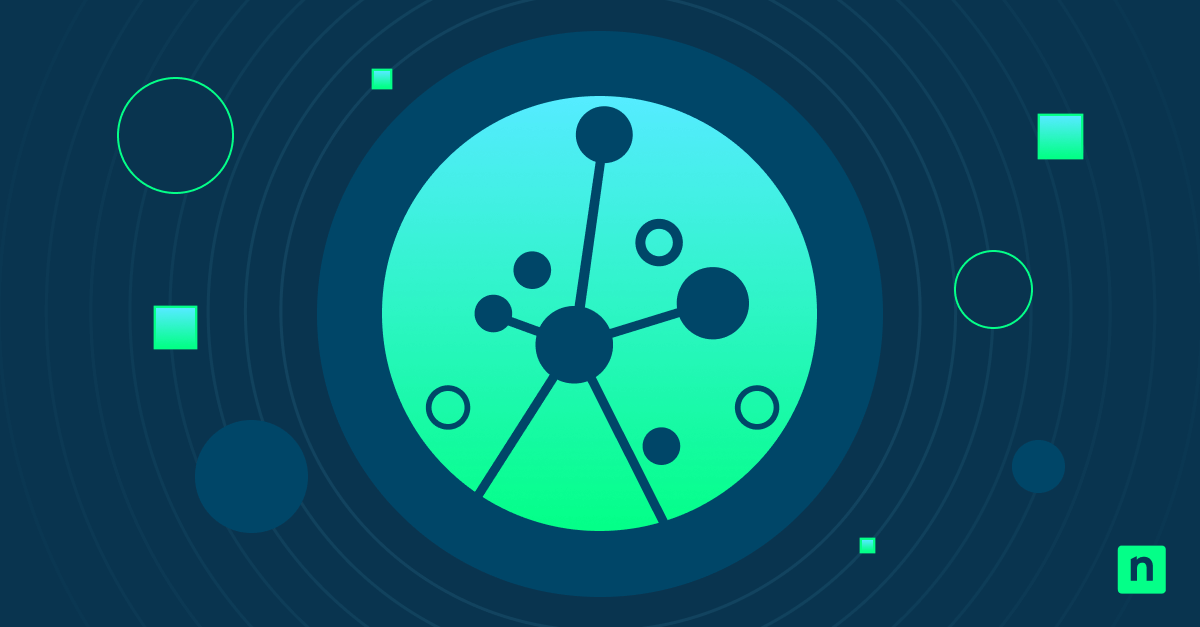Conversational AI vs. Generative AI: what’s the difference? While both conversational AI and generative AI are transforming business operations, they serve distinct roles. Conversational AI enables structured, goal-oriented interactions between users and systems, while generative AI creates original content and solutions. Understanding these differences will help you implement the most effective AI-driven strategies and workflows.
Conversational AI in practice
There are countless scenarios where businesses need to handle repetitive questions, streamline user interactions, or offer real-time support at scale. Conversational AI is designed to automate these structured, goal-oriented exchanges between humans and machines.
In practice, it facilitates natural interactions between humans and machines through predetermined response patterns. When implemented in enterprise environments, these systems interpret user inputs and generate contextually appropriate responses based on predefined rules, intent recognition, and language understanding models.
Key aspects of conversational AI:
- Facilitates natural human-machine interactions.
- Uses predefined rules and intent recognition.
- Excels in structured interactions with defined parameters.
- Powers virtual assistants and customer service chatbots.
- Operates through a query-response framework.
Generative AI in action
Generative AI represents a fundamentally different approach to artificial intelligence that focuses on creating entirely new content rather than selecting from predefined responses. These systems analyze vast datasets to understand patterns, relationships, and structures, then generate original outputs that mirror the characteristics of their training data.
Key aspects of generative AI:
- Focuses on creating new, original content.
- Analyzes vast datasets to understand patterns.
- Generates outputs mirroring training data characteristics.
- Versatile across content creation, data analysis, and problem-solving.
- Used to draft documents, generate code, and produce visual assets.
Conversational AI vs. generative AI: Core differences
Before deciding which tool to implement, it’s important to understand the core technology and logic models underpinning each.
Interaction models
Rule-based systems work best when the path is clear. In structured scenarios — like IT support — conversational AI acts as a smart guide, recognizing user intent and navigating through a predefined flow. Ask, “How do I connect to the VPN?,” and it walks you through a tailored sequence based on your device, permissions, or location. Each step is deliberate, ensuring accuracy and consistency across repeated interactions.
Generative AI, by contrast, behaves more like a knowledgeable collaborator. Rather than pulling from a fixed script, it listens, interprets context, and constructs responses on the fly. Faced with a complex issue—say, troubleshooting an unusual network configuration—an engineer can describe the symptoms, and the model will generate a cohesive solution by drawing from patterns across multiple domains. That adaptability is powerful, but it can also mean the output needs expert review before implementation.
Output complexity
Conversational AI typically delivers precise, templated responses drawn from approved knowledge bases. When supporting a software migration, it provides consistent step-by-step instructions and troubleshooting guidance for known issues. This approach ensures accuracy for routine matters but limits its ability to address novel problems outside its training parameters.
On the other hand, generative AI creates sophisticated outputs tailored to specific situations. It can produce complete technical documentation for different stakeholders, develop custom scripts for automation tasks, or design architectural solutions for complex infrastructure challenges. This capability dramatically accelerates specialized IT work but requires expert review to catch occasional technical inaccuracies or “hallucinations” in the generated content.
Adaptability in IT environments
Similar distinctions exist in how adaptable these tools are to different IT environments. Rule-based AI shines in structured support scenarios where processes are well-defined. It efficiently handles routine help desk functions like account unlocking, application access requests, and common error resolution. IT teams can quickly train these systems to support new software rollouts by adding specific intents and response templates to their knowledge base.
Generative AI, on the other hand, excels when facing novel technical challenges. Security teams use it to analyze unusual network activity patterns and generate potential threat assessments based on similarities to known attack vectors. Infrastructure teams can use generative AI to optimize complex environments by having the system analyze performance metrics and recommend configuration improvements. This adaptability helps IT teams respond to emerging issues without waiting for traditional knowledge base updates.
Conversational AI vs. generative AI in IT
IT departments increasingly deploy both conversational and generative AI technologies to enhance operational efficiency and service delivery. Conversational AI vs. generative AI in IT represents less a competition and more of a strategic allocation of resources based on specific use cases and desired outcomes.
The complementary deployment model typically positions conversational AI as the front-end interface that handles initial user interactions, collects necessary information, and addresses straightforward requests. For complex issues requiring deeper analysis or custom solutions, the system transitions to generative AI components that can analyze technical details, produce troubleshooting recommendations, or generate implementation documentation.
Automating support workflows
Support automation is one of the best use cases for conversational AI. This system excels at managing the initial stages of support workflows. For example, when an employee submits a ticket about email access issues, the AI can immediately collect details about login problems or application errors and resolve the issue through structured interactions that gather relevant information.
In this scenario, generative AI can be used for more advanced diagnostic needs. When integrated into support workflows, these systems can analyze error logs, system configurations, and user-reported symptoms to identify potential causes and recommend appropriate remediation steps.
Support teams implementing both technologies report substantial efficiency improvements through:
- Reduced resolution times for complex technical issues.
- Decreased escalation rates for routine support requests.
- Improved consistency in troubleshooting strategies.
- Enhanced knowledge transfer between support tiers.
- More comprehensive documentation of resolution steps.
Enhancing user experience
When both AI types are properly implemented in IT environments, users see a marked improvement in their user experience. Conversational interfaces provide immediate responses to user inquiries regardless of time zone or support staff availability. These systems maintain consistent interaction quality across all engagements while efficiently collecting relevant information before any human involvement becomes necessary.
The personalization power of generative AI transforms user experience by adapting responses to individual technical proficiency and preferences. It can generate tailored documentation — for example, offering simplified cloud storage instructions for non-technical staff while providing detailed security configuration guidance for IT professionals accessing the same system. Step-by-step guides and explanations are dynamically customized based on the user’s role, context, and level of expertise.
Challenges and Considerations
While conversational and generative AI offer significant benefits, organizations must navigate several key challenges. First, data privacy and security are critical, especially when handling sensitive information. Both technologies require ongoing monitoring to maintain accuracy and relevance, as conversational AI can struggle with ambiguous queries and generative AI may produce incorrect or biased outputs.
Likewise, integration with existing systems and workflows can also present some technical hurdles, including:
- Connecting AI systems with legacy ticketing platforms.
- Ensuring proper authentication and authorization controls.
- Managing API rate limits and service dependencies.
- Training staff on effective AI interaction methods.
- Establishing clear escalation paths for AI-assisted processes.
Evolving roles of AI in business strategy
The strategic implementation of conversational and generative AI continues to evolve as organizations recognize the distinct advantages each technology offers. Forward-thinking businesses increasingly adopt a layered approach that leverages conversational AI for structured interactions while deploying generative capabilities for complex analysis, content creation, and problem-solving.
As you evaluate AI solutions for your organization, consider starting with well-defined use cases where either conversational or generative AI can deliver immediate value. Then, explore how these technologies might work together to transform your IT operations and customer experience in the long run.








